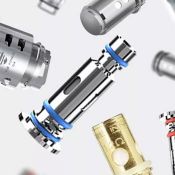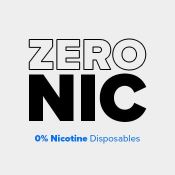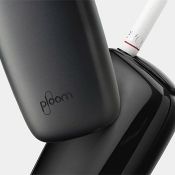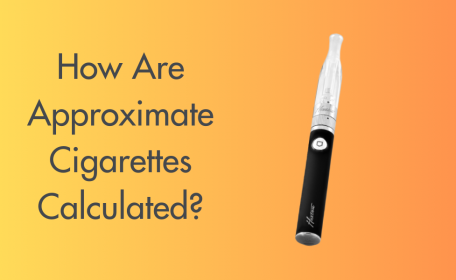← Back
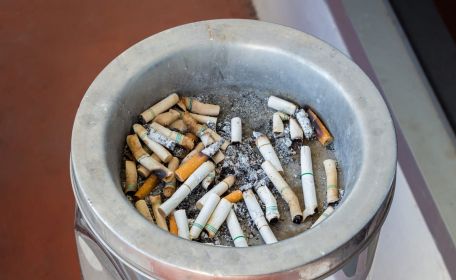
 A carcinogen is any substance capable of causing cancer. We know these are abundant in cigarettes, and it’s the reason why so many smokers have died from lung cancer as a result of smoking cigarettes.
Researchers have found that glycerin and propylene glycol, known irritants, are released in e-cigarette vapour. These are used to create artificial smoke, but it’s no secret that e-cigs contain these ingredients. What is often overlooked by the media and researchers looking to propagate e-cigarettes as harmful is that they are also present in a number of other products — from baby food to medication, such as asthma inhalers.
Saying that e-cigarettes are unhealthy because they contain known eye irritants is like saying that life-saving medication shouldn’t be taken because, if misused, it can cause an overdose. It is the way in which these products are used that defines their risk. Pushing e-cigarettes further underground and shaming those who use them will only prevent those who choose to vape from accessing the information they need to use them responsibly, just as you would use nicotine patches properly.
However, federal health officials consider these two ingredients only “probable carcinogens”. So, what’s the problem with this?
The issue is that these ingredients are only a small portion of the number of substances considered “probable carcinogens”. Red meat and warm drinks (which themselves are low-risk carcinogens) carry cancer warnings. But too many of these warnings can be counter-productive.
A carcinogen is any substance capable of causing cancer. We know these are abundant in cigarettes, and it’s the reason why so many smokers have died from lung cancer as a result of smoking cigarettes.
Researchers have found that glycerin and propylene glycol, known irritants, are released in e-cigarette vapour. These are used to create artificial smoke, but it’s no secret that e-cigs contain these ingredients. What is often overlooked by the media and researchers looking to propagate e-cigarettes as harmful is that they are also present in a number of other products — from baby food to medication, such as asthma inhalers.
Saying that e-cigarettes are unhealthy because they contain known eye irritants is like saying that life-saving medication shouldn’t be taken because, if misused, it can cause an overdose. It is the way in which these products are used that defines their risk. Pushing e-cigarettes further underground and shaming those who use them will only prevent those who choose to vape from accessing the information they need to use them responsibly, just as you would use nicotine patches properly.
However, federal health officials consider these two ingredients only “probable carcinogens”. So, what’s the problem with this?
The issue is that these ingredients are only a small portion of the number of substances considered “probable carcinogens”. Red meat and warm drinks (which themselves are low-risk carcinogens) carry cancer warnings. But too many of these warnings can be counter-productive.
 From a vaper’s perspective, it is possible to overheat the e-liquid, either from using the device at a power level that is too high for what it is designed for, or because the atomizer or cartomizer needs replacing. However, doing so will produce a burnt, dry hit that does not appeal to the taste buds. This is how these results were found: By taking a well-known theory that burning (the wicks and the liquid, in this case) causes toxicity and applying it to a product that scientists want to promote as harmful.
Furthermore, the vast amount of high-end devices have a temperature control function which means the coil will not exceed a level set by the user. Others, like the Vapouriz vCurve, automatically adjusts its power output based on the set resistance of the coil. This prevents overheating so that vapers do not put themselves at risk when experimenting with a device that lets them customise their experience.
From a vaper’s perspective, it is possible to overheat the e-liquid, either from using the device at a power level that is too high for what it is designed for, or because the atomizer or cartomizer needs replacing. However, doing so will produce a burnt, dry hit that does not appeal to the taste buds. This is how these results were found: By taking a well-known theory that burning (the wicks and the liquid, in this case) causes toxicity and applying it to a product that scientists want to promote as harmful.
Furthermore, the vast amount of high-end devices have a temperature control function which means the coil will not exceed a level set by the user. Others, like the Vapouriz vCurve, automatically adjusts its power output based on the set resistance of the coil. This prevents overheating so that vapers do not put themselves at risk when experimenting with a device that lets them customise their experience.
Why Public Fears About So-Called Carcinogens in Electronic Cigarettes Are Unfounded

Recent “studies” have been published claiming that a number of harmful carcinogens have been found in e-cigarettes. But just how much of this is fact? We take a look behind the pseudoscience to dispel public fears.
A recent study conducted by researchers at Lawrence Berkeley National Laboratory has found that e-cigarettes contain carcinogens. The vaping industry has suffered a backlash ever since e-cigs entered the mainstream, and with so many scare tactics used by anti-vaping officials, the public doesn’t know what to believe anymore. So, what are the facts behind this latest study?What Is a Carcinogen?
 A carcinogen is any substance capable of causing cancer. We know these are abundant in cigarettes, and it’s the reason why so many smokers have died from lung cancer as a result of smoking cigarettes.
Researchers have found that glycerin and propylene glycol, known irritants, are released in e-cigarette vapour. These are used to create artificial smoke, but it’s no secret that e-cigs contain these ingredients. What is often overlooked by the media and researchers looking to propagate e-cigarettes as harmful is that they are also present in a number of other products — from baby food to medication, such as asthma inhalers.
Saying that e-cigarettes are unhealthy because they contain known eye irritants is like saying that life-saving medication shouldn’t be taken because, if misused, it can cause an overdose. It is the way in which these products are used that defines their risk. Pushing e-cigarettes further underground and shaming those who use them will only prevent those who choose to vape from accessing the information they need to use them responsibly, just as you would use nicotine patches properly.
However, federal health officials consider these two ingredients only “probable carcinogens”. So, what’s the problem with this?
The issue is that these ingredients are only a small portion of the number of substances considered “probable carcinogens”. Red meat and warm drinks (which themselves are low-risk carcinogens) carry cancer warnings. But too many of these warnings can be counter-productive.
A carcinogen is any substance capable of causing cancer. We know these are abundant in cigarettes, and it’s the reason why so many smokers have died from lung cancer as a result of smoking cigarettes.
Researchers have found that glycerin and propylene glycol, known irritants, are released in e-cigarette vapour. These are used to create artificial smoke, but it’s no secret that e-cigs contain these ingredients. What is often overlooked by the media and researchers looking to propagate e-cigarettes as harmful is that they are also present in a number of other products — from baby food to medication, such as asthma inhalers.
Saying that e-cigarettes are unhealthy because they contain known eye irritants is like saying that life-saving medication shouldn’t be taken because, if misused, it can cause an overdose. It is the way in which these products are used that defines their risk. Pushing e-cigarettes further underground and shaming those who use them will only prevent those who choose to vape from accessing the information they need to use them responsibly, just as you would use nicotine patches properly.
However, federal health officials consider these two ingredients only “probable carcinogens”. So, what’s the problem with this?
The issue is that these ingredients are only a small portion of the number of substances considered “probable carcinogens”. Red meat and warm drinks (which themselves are low-risk carcinogens) carry cancer warnings. But too many of these warnings can be counter-productive.
Why Nicotine Isn't a Carcinogen
Nicotine isn’t a carcinogen. It is proven to be addictive, but nicotine alone does not cause cancer. The International Agency for Cancer Research plans to review nicotine before 2019 and are considering classifying nicotine as a carcinogen. If this happens, when will it stop? It further promotes an idea in the public eye that everything causes cancer, to the point that these labels are meaningless. The focus should be on promoting high-risk carcinogens as harmful, rather than throwing in a variety of products, such as e-cigarettes — which have proved to be effective aids to reduce or quit an incredibly harmful habit — and making them seem unsafe.Why the Study Is Incorrect
The methods used in this study to identify these “probable carcinogens” — even though they provide little to no risk — involved heating the e-liquid to unsafe levels. However, these conditions are extremely unlikely to be replicated by any e-cig user. Take it this way: If you burn a piece of toast, it releases a carcinogen called acrylamide. Now, most people won’t eat burnt toast because they don’t like the taste. Even so, just because burning a piece of toast releases a chemical that is capable of causing cancer, does not mean that people will stop eating bread. From a vaper’s perspective, it is possible to overheat the e-liquid, either from using the device at a power level that is too high for what it is designed for, or because the atomizer or cartomizer needs replacing. However, doing so will produce a burnt, dry hit that does not appeal to the taste buds. This is how these results were found: By taking a well-known theory that burning (the wicks and the liquid, in this case) causes toxicity and applying it to a product that scientists want to promote as harmful.
Furthermore, the vast amount of high-end devices have a temperature control function which means the coil will not exceed a level set by the user. Others, like the Vapouriz vCurve, automatically adjusts its power output based on the set resistance of the coil. This prevents overheating so that vapers do not put themselves at risk when experimenting with a device that lets them customise their experience.
From a vaper’s perspective, it is possible to overheat the e-liquid, either from using the device at a power level that is too high for what it is designed for, or because the atomizer or cartomizer needs replacing. However, doing so will produce a burnt, dry hit that does not appeal to the taste buds. This is how these results were found: By taking a well-known theory that burning (the wicks and the liquid, in this case) causes toxicity and applying it to a product that scientists want to promote as harmful.
Furthermore, the vast amount of high-end devices have a temperature control function which means the coil will not exceed a level set by the user. Others, like the Vapouriz vCurve, automatically adjusts its power output based on the set resistance of the coil. This prevents overheating so that vapers do not put themselves at risk when experimenting with a device that lets them customise their experience.






